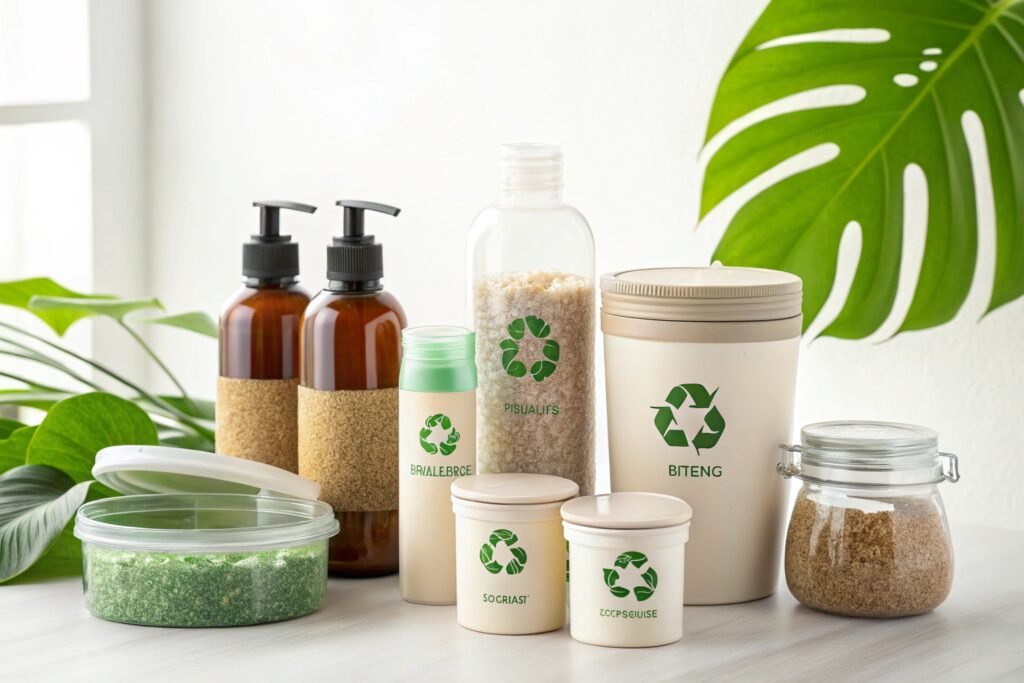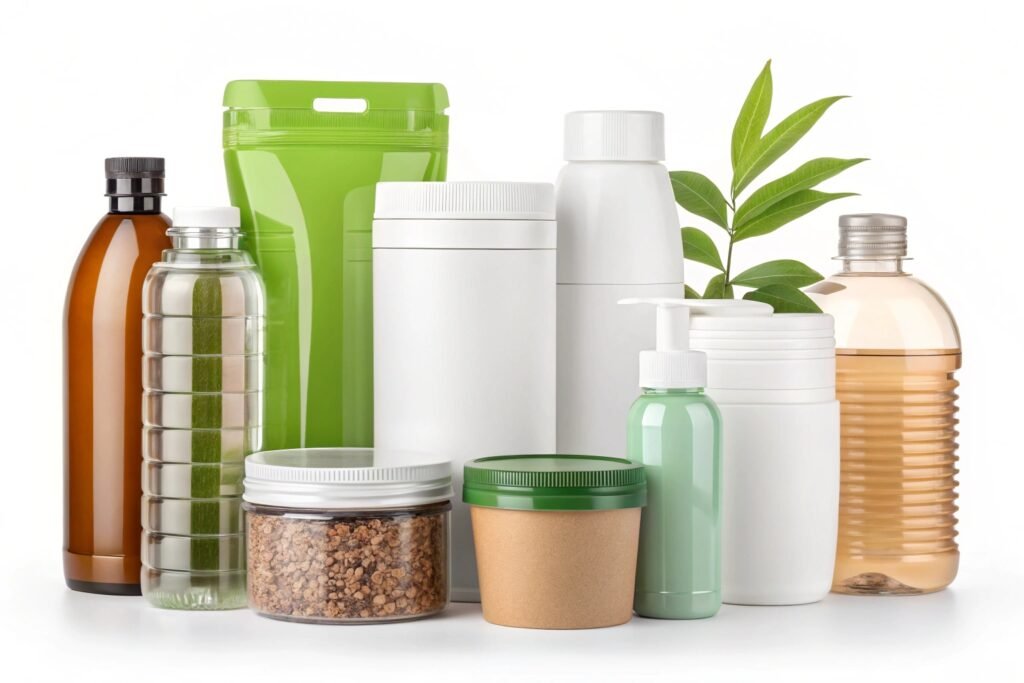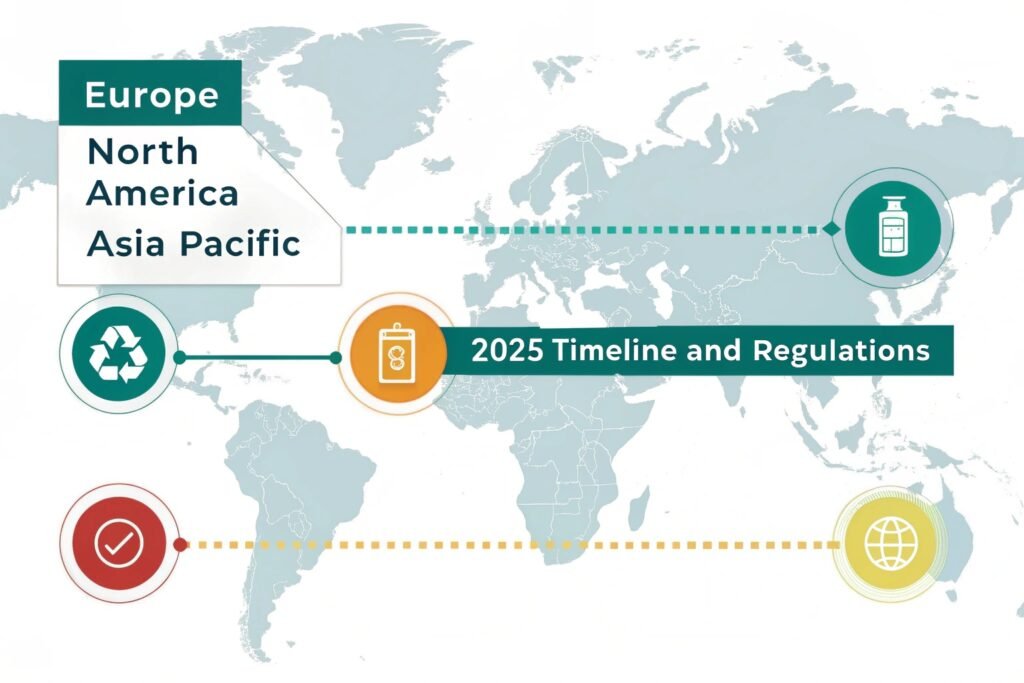Are you feeling overwhelmed by the rapidly changing landscape of sustainable packaging regulations? As a packaging manufacturer, I've seen many B2B buyers struggle to navigate these complex requirements while maintaining their bottom line.
The sustainable packaging landscape in 2025 will be defined by stricter regulations, with targets including 70% recycled content in packaging, 100% recyclable designs, and zero single-use plastics. Companies must adapt through material innovation, design optimization, and supply chain transformation.

Having worked with numerous global brands on their packaging transitions, I understand the challenges of balancing sustainability goals with practical business needs. Let's explore the key trends and requirements that will shape packaging decisions in 2025.
What is the Future of Sustainable Packaging?
The packaging industry faces unprecedented pressure to reduce environmental impact. Just last month, I consulted with a beverage company struggling to meet upcoming regulations while maintaining product protection standards.
The future of sustainable packaging1 centers on circular economy principles2, featuring biodegradable materials3, reduced plastic content, and improved recycling infrastructure. Key innovations include bio-based polymers, chemical recycling technologies, and smart packaging solutions.

Deep Dive: Material Evolution
The transition to sustainable materials requires careful consideration of multiple factors:
Bio-based Alternatives
-
PLA (Polylactic Acid)
- Derived from renewable resources
- Comparable strength to traditional plastics
- Higher production costs
-
PBS (Polybutylene Succinate)
- Excellent biodegradability
- Suitable for food packaging
- Limited availability
Recycled Content Integration
| Material Type | Current Usage | 2025 Target | Challenges |
|---|---|---|---|
| rPET | 30% | 50% | Quality consistency |
| rHDPE | 20% | 40% | Supply constraints |
| rPP | 15% | 35% | Processing complexity |
What Are the 2025 National Packaging Targets?
Many of my clients have expressed confusion about varying regional requirements. Recently, a Canadian distributor needed help understanding how EU regulations would affect their exports.
By 2025, most developed nations require 100% recyclable packaging4, minimum 30% recycled content5, and 70% recycling rates. Specific targets vary by region, with the EU leading in stringency through its Circular Economy Action Plan6.

Deep Dive: Regional Requirements
Global Target Overview
-
European Union
- 100% recyclable packaging by 2025
- 55% plastic packaging recycling rate
- Extended Producer Responsibility schemes
-
North America
- State-specific regulations
- Federal recycling infrastructure investment
- Industry-led initiatives
-
Asia-Pacific
- Varied implementation timelines
- Focus on collection systems
- Emerging market considerations
Implementation Timeline
| Year | Milestone | Impact on Business |
|---|---|---|
| 2023 | Design requirements | Product development changes |
| 2024 | Recycled content minimums | Supply chain adaptation |
| 2025 | Full compliance | Operational transformation |
As someone deeply involved in the packaging industry, I've seen how proper planning and strategic adaptation can turn these challenges into opportunities. The key is starting early and making informed decisions based on your specific market requirements.
Conclusion
The 2025 sustainable packaging landscape demands immediate action from B2B buyers. Success requires understanding regional requirements, investing in innovative materials, and partnering with knowledgeable suppliers who can support your transition.
Need guidance on sustainable packaging solutions? Contact me at polybottletech@gmail.com to discuss how PBTech can help you meet your 2025 sustainability targets.
-
Exploring this resource will provide insights into innovative practices and materials that can help reduce environmental impact in packaging. ↩
-
Understanding these principles can guide businesses in creating more sustainable packaging solutions and reducing waste. ↩
-
This link will help you discover the advantages of biodegradable materials and their role in sustainable packaging efforts. ↩
-
Discover the advantages of adopting 100% recyclable packaging for your business and its impact on the environment. ↩
-
Learn why incorporating 30% recycled content is crucial for sustainability and compliance with upcoming regulations. ↩
-
Explore this link to understand how the Circular Economy Action Plan shapes packaging regulations and sustainability efforts in the EU. ↩

